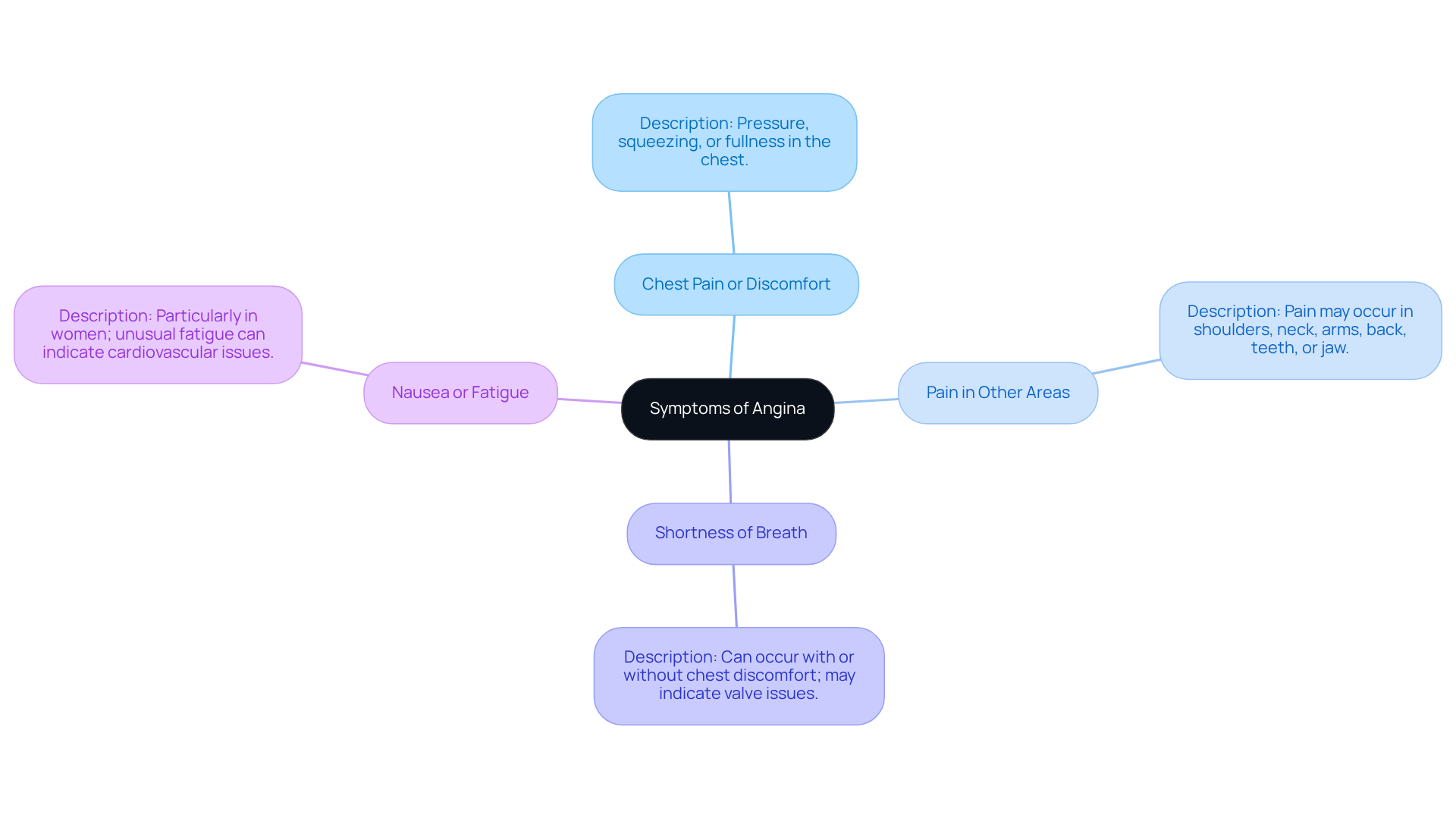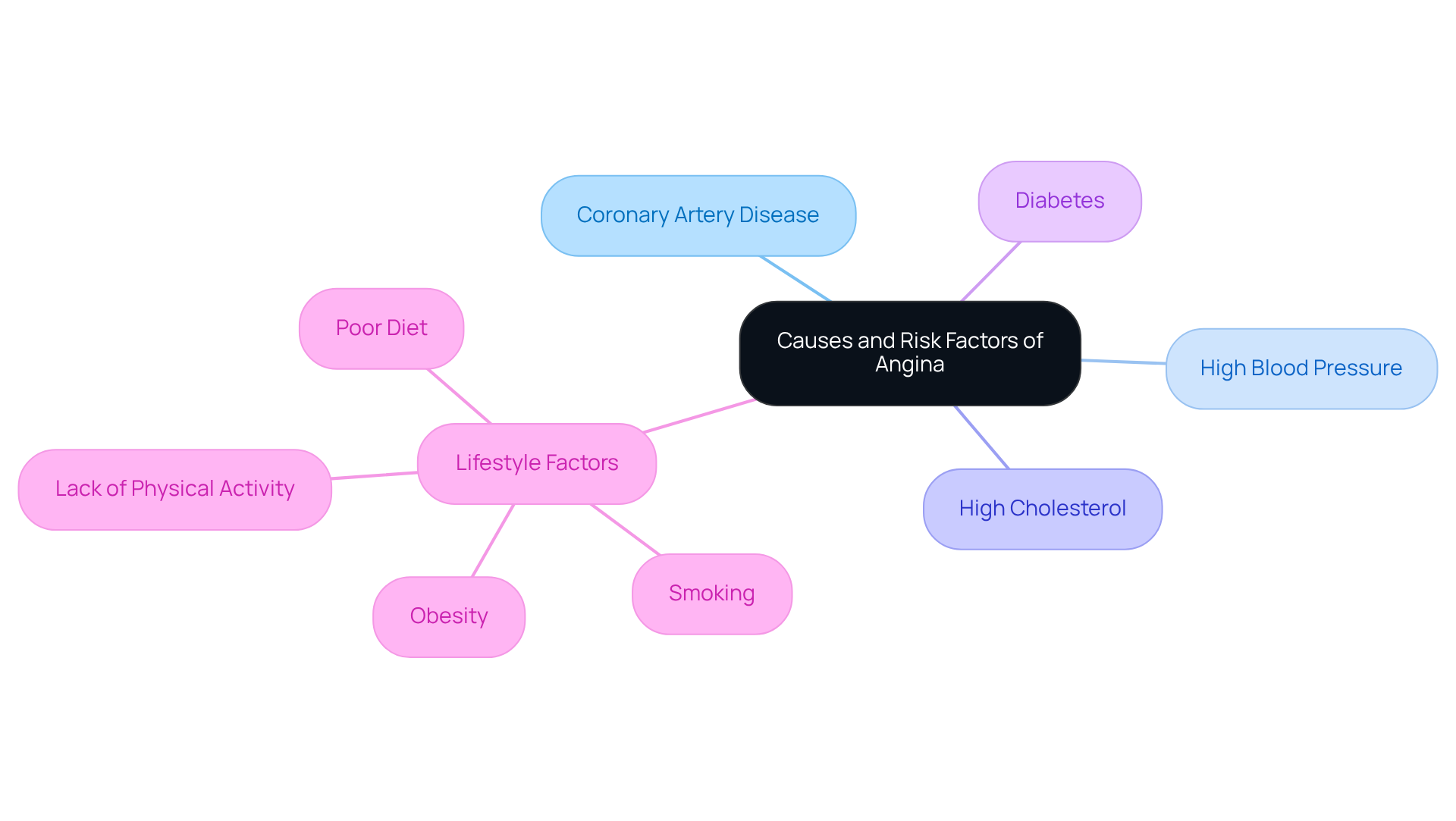


When it comes to treating angina in elderly patients, it's essential to recognize their symptoms and understand the unique risk factors they face. This article highlights the importance of personalized care, which can make a significant difference in their health journey. By focusing on tailored management strategies, including medication, lifestyle changes, and regular check-ups, we can help enhance cardiovascular health, especially for those with pre-existing conditions like diabetes and high blood pressure.
Have you ever felt overwhelmed by health concerns? You're not alone. Many elderly patients share similar feelings. It's crucial to know that there are effective ways to manage angina, and support is available. Personalized care means that treatment plans are designed with each individual's needs in mind, promoting a sense of empowerment and control over their health.
Furthermore, regular check-ups and open communication with healthcare providers can lead to better outcomes and peace of mind. Remember, you deserve to feel your best, and taking proactive steps towards managing your health is a vital part of that journey. Together, we can work towards a healthier future, ensuring that you receive the compassionate care you need.
Understanding angina is crucial, especially for our elderly loved ones. This common heart condition can significantly impact daily life, and it’s important to recognize its effects. Effective management not only alleviates symptoms but also empowers patients to take control of their heart health. Yet, navigating the complexities of angina can be challenging. How can elderly patients differentiate between the types of angina and recognize the subtle symptoms that may vary with age and underlying health conditions?
In addition to this, it’s essential to explore how elderly patients can navigate the landscape of angina treatment. By doing so, they can ensure they receive the most effective care possible. Remember, you are not alone in this journey; support is available to help you every step of the way.
Angina is a type of chest discomfort that arises from reduced blood flow to the heart, often signaling a potential coronary artery issue. At Amavita Heart and Vascular Health®, we are dedicated to providing expert diagnosis and personalized care for effective angina treatment to manage this condition. Understanding the types of angina can empower you to recognize when to seek immediate medical attention.
Recognizing these types is essential for your health. Our comprehensive cardiac assessments utilize advanced risk evaluation tools and a preventive cardiology strategy that includes angina treatment, aimed at significantly reducing the likelihood of an attack, especially for those at higher risk, such as individuals with diabetes, hypertension, or a family history of cardiovascular issues.
With state-of-the-art imaging and minimally invasive therapies, we provide that addresses your specific concerns. Our approach is tailored to fit your unique condition and lifestyle, ensuring you receive the support you need. Remember, you are not alone in this journey; we are here to help you every step of the way.

Common symptoms of angina can be concerning, and it's important to recognize them:
It's essential to note that older individuals, especially those with diabetes, high blood pressure, or a family history of cardiovascular issues, may experience signs that differ from typical chest discomfort. Keeping a diary of symptoms can be a helpful way to monitor occurrences and triggers.
At Amavita Cardiac and Vascular Health, we understand how symptoms can affect your daily life, particularly in relation to angina treatment. We provide thorough evaluations and for valve conditions as part of our angina treatment to help determine the specific causes of your symptoms. Our goal is to develop tailored treatment plans aimed at enhancing your cardiac function and revitalizing your energy levels. Remember, you are not alone, and we are here to support you every step of the way.

Several factors can contribute to the development of angina, and understanding these can be the first step towards improving angina treatment and achieving better heart health. Consider the following:
At Amavita Heart and Vascular Health®, we truly understand the importance of comprehensive cardiac evaluations and preventive strategies tailored specifically for high-risk patients. If you are an elderly patient, particularly with risk factors like high blood pressure, high cholesterol, or diabetes, we encourage you to consult regularly with your healthcare provider regarding angina treatment. Together, you can assess your risk factors and develop a that suits your needs.
Our advanced imaging capabilities and minimally invasive treatments are designed with you in mind, ensuring that your care is centered around your life and not just your condition. Remember, you are not alone in this journey; we are here to support you every step of the way.

Managing angina treatment can feel overwhelming, but there are effective strategies and lifestyle changes that can help, especially when enhanced by Amavita's CardioElite™ program, designed for comprehensive cardiovascular care.
Medications: It's important to know that common medications like nitrates, beta-blockers, and calcium channel blockers can relieve symptoms and improve blood flow. With the CardioElite™ program, you’ll benefit from advanced that optimizes your medication management, ensuring you receive effective treatment tailored to your needs.
Lifestyle Modifications:
Stress Management: It’s equally important to manage stress. Practicing relaxation techniques such as yoga, meditation, or deep breathing exercises can be beneficial. You'll find guidance from CardioElite™ professionals who are here to support you on this journey.
Regular Check-ups: Don’t forget to schedule regular appointments with your healthcare provider. Monitoring your heart health and adjusting treatment plans as necessary is key. The CardioElite™ program ensures continuous monitoring and proactive management of your cardiovascular well-being.
By following these strategies, supported by Amavita's CardioElite™ program, you can effectively manage your angina treatment and enhance your overall cardiovascular health. Remember, you are not alone in this journey; there are caring professionals ready to help you every step of the way.
Understanding and managing angina is vital for elderly patients striving to maintain their heart health. This article highlights the importance of recognizing the types of angina, identifying symptoms, and implementing effective treatment strategies tailored to individual needs. By being informed and proactive, patients can significantly enhance their quality of life and mitigate the risks associated with this condition.
Key points discussed include:
Furthermore, actionable treatment strategies are emphasized, such as:
These insights empower elderly patients to take charge of their health and work closely with healthcare providers for optimal care.
Ultimately, effective angina management is not merely about treating symptoms; it encompasses fostering a comprehensive approach to heart health. By acknowledging the importance of lifestyle changes, maintaining regular medical consultations, and utilizing available resources, elderly patients can navigate their angina journey with confidence. Taking these steps not only enhances individual well-being but also contributes to a broader understanding of cardiovascular health in aging populations.
What is angina?
Angina is a type of chest discomfort that occurs due to reduced blood flow to the heart, often indicating a potential issue with the coronary arteries.
What are the two main types of angina?
The two main types of angina are Stable Angina and Unstable Angina. Stable Angina occurs during physical activity or stress and typically eases with rest or medication. Unstable Angina can happen at rest or with minimal exertion, lasts longer, and is not relieved by rest or treatment.
Why is it important to recognize the types of angina?
Recognizing the types of angina is essential for health because it helps individuals understand when to seek immediate medical attention, especially since Unstable Angina indicates a higher risk of a cardiac event.
What should individuals at higher risk for angina do?
Individuals at higher risk for angina, such as those with diabetes, hypertension, or a family history of cardiovascular issues, should engage in comprehensive cardiac assessments and preventive cardiology strategies to significantly reduce the likelihood of an attack.
How does Amavita Heart and Vascular Health® approach angina treatment?
Amavita Heart and Vascular Health® utilizes advanced risk evaluation tools and offers personalized care, including state-of-the-art imaging and minimally invasive therapies, to provide targeted cardiovascular care tailored to each patient's unique condition and lifestyle.